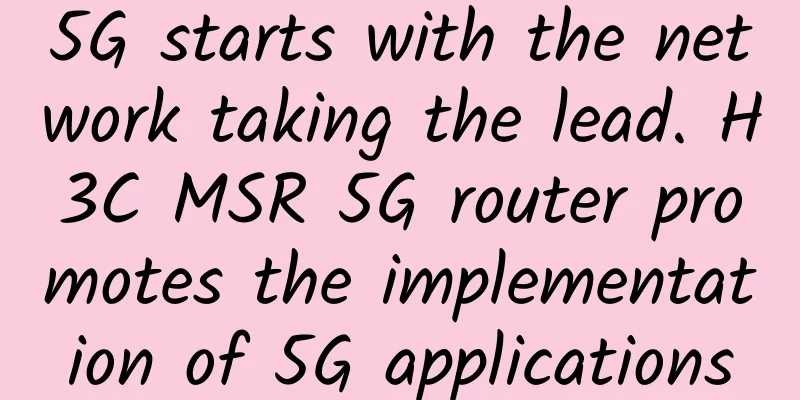Knowledge points of wireless network coverage system

|
1. What is AP? Answer: AP - Wireless Access Point (Wireless Access Point) AP is the HUB in the traditional wired network and is also the most commonly used device when building a small wireless LAN. AP is equivalent to a bridge connecting the wired network and the wireless network. Its main function is to connect various wireless network clients together and then connect the wireless network to the Ethernet to achieve the purpose of wireless network coverage. 2. Are APs divided into “thin” and “fat”? (1) Thin AP (FITAP):
(2) Fat AP (FATAP) The so-called fat AP in the industry is also called wireless router by some people. Wireless router is different from pure AP. In addition to wireless access function, it generally has two interfaces, WAN and LAN, supports address translation (NAT) function, and often supports DHCP server, DNS and MAC address cloning, as well as VPN access, firewall and other security functions. 3. What is AC? A: A wireless controller (Wireless Access Point Controller) is a network device used to centrally control controllable wireless APs in a local area network. It is the core of a wireless network and is responsible for managing all wireless APs in a wireless network. AP management includes: issuing configurations, modifying related configuration parameters, RF intelligent management, access security control, etc. (Currently, all ACs and APs on the market are from the same manufacturer to manage each other) 4. What is POE power supply and what is a POE switch? A: POE (PowerOver Ethernet) POE is also known as the power supply system based on LAN (PoL, Powerover LAN) or Active Ethernet (Active Ethernet), sometimes referred to as Power over Ethernet. It refers to the technology that can provide DC power to some IP-based terminals (such as IP phones, wireless LAN access points AP, network cameras, etc.) while transmitting data signals without any changes to the existing Ethernet Cat.5 wiring infrastructure. POE technology can ensure the normal operation of the existing network while ensuring the safety of the existing structured wiring, minimizing costs. Mass market application - POE switch: POE switch can not only provide the transmission function of ordinary switches, but also provide power supply to the device at the other end of the network cable. Power supply + data transmission are integrated, and there is no need for additional power supply modules or POE power supply modules to power the device. One Cat.5 cable can complete all the work. 5. Differences between 'standard' and 'non-standard' POE power supply
There are several output voltages (DC) on the market, including 48V, 24V and 12V. 6. What software and hardware are needed to deploy a wireless project? Basic hardware: router POE switch AC controller wireless AP High-end hardware: firewall router traffic and behavior management bypass main switch floor switch POE switch AC controller wireless AP 7. Is it true that the greater the AP power, the better? Answer: No, the greater the power of the AP, the higher the signal strength. If you understand it literally, you will be misled. The stronger the signal, the better. However, a strong signal refers to the signal itself. The signal transmission in the entire wireless network is two-way. The transmitter and the receiver will transmit data to each other. If the signal at the sending end is too strong, it will inevitably affect the data returned by the receiving end, which will cause network transmission delays or packet loss. Simple understanding: In a space, you and another person are talking at the same time. If the other person's voice is too loud and yours is too soft, the other person will not be able to hear what you are saying, thus affecting the quality of the call. In a large wireless project, what are the key points and areas that need the most attention? 8. Key points from the engineering perspective: (1) Design The actual construction drawings determine the direction and location of the wiring, and need to consider factors such as concealment, damage to buildings (structural characteristics), avoiding power lines and other lines while utilizing existing space, and the necessary and effective protection needs for cables under on-site conditions. (2) Router location The router is generally placed in an underground weak-current room (away from the strong-current room to avoid strong electromagnetic interference). Pay attention to ventilation and keep it dry. It is best to have a cabinet and place it together with the core switch. (3) Location of the POE power supply switch The POE switch should be reasonably located in the middle of the AP point to reduce the wiring cost and shorten the distance from the switch to the AP. (4) AP location selection The AP points should be placed in the center of the scene and radially outward. The coverage of AP parts should overlap to reduce signal blind spots. The distance between AP and POE switch should not exceed 80 meters (for example, genuine AMP network cable) (5) Laying of network cables As the transmission carrier of network signals, network cables should be protected during laying to avoid breakage or dead corners. If necessary, they should be placed in iron pipes or on roof bridges. Special attention should be paid to the principle of high-voltage wires to reduce interference with signals. Notes on practical debugging and post-maintenance: a. External network and routing: The external network cable is connected in place to ensure the normal Internet access conditions of the line, and the routing is connected to ensure that the routing itself can communicate normally on the Internet. During construction, the main exchange and the construction floor exchange are connected to ensure normal communication of the backbone network. b. Debugging the intercom: During the debugging stage, it is necessary to borrow a set of intercom equipment from the shopping mall to facilitate the debugging work. c. During the construction and debugging phase, sufficient spare parts must be reserved for APs, switches, network cables, and other construction and debugging hardware. d. Construction drawings: Before each construction, please ask the contractor to provide us with two copies of the construction drawings.
e. Construction wiring and line marking planning:
Line marking record:
Check on-site whether the installed AP is powered on and working properly: After the construction workers completed the construction, they checked on site that all APs were powered on normally. When powered on, the green indicator light on the AP was on. If the router was in place and running, the software could be used to detect whether the AP was emitting signals and accessing the Internet normally. If the above information is completely clear, there is no need for construction personnel to be on site. If the above information is completely unclear, construction personnel will be required to cooperate on site for each debugging. |
<<: Blockchain: a panacea for wealth or deadly arsenic?
>>: Four major battles of the Internet of Things broke out in 2018
Recommend
How to solve the packet loss problem in TCP transmission protocol
1. Before answering this question, we need to con...
What else to look forward to in the communications industry in 2021?
[[373658]] This article is reprinted from the WeC...
Goodbye, endless pop-up ads
In recent years, with the rapid development of mo...
IT spending priorities for 2020
The role of the CIO has become a transformational...
In-depth: Two major challenges need to be solved to achieve mature 5G applications in the power industry
Using bits to drive watts is one of the dreams of...
Why is network proxy technology so popular? Forward proxy | Reverse proxy
1. The concept of agency I believe everyone has h...
The world's first home 10G modem was successfully tested: download and upload speeds exceeded 4 Gigabit!
Comcast, an American telecommunications service p...
Servers are attacked for nothing? It’s because the high-defense system is not well-prepared
The development of cloud servers is unstoppable. ...
Debunking three myths about edge computing
【51CTO.com Quick Translation】With millions of mac...
Will the next 5G data package be an “unlimited data package”?
In the past two years, 4G unlimited data packages...
No wonder 4G is faster than 5G now. The secrets of 4G you don’t know
I don’t know if you have noticed that it is obvio...
The 5G R16 standard is frozen. What does it mean?
On July 3, 3GPP announced the completion of the s...
ThomasHost: $5/month KVM-2GB/50GB/1G port unlimited traffic/6 computer rooms available
I searched and found that the blog shared informa...
Common social engineering methods for cracking WPA2 passwords and preventive measures
1. Introduction What is social engineering? Socia...
Ruijie Networks' scenario-based wireless technology helps Suning's new shopping model of "Internet + Retail"
As a leading enterprise in China's private en...





![[12.12] DogYun Dynamic Cloud 40% off, Classic Cloud 20% off, Dedicated Server 100 yuan off per month, Lucky Wheel Prize draw](/upload/images/67cac4662d5a7.webp)



